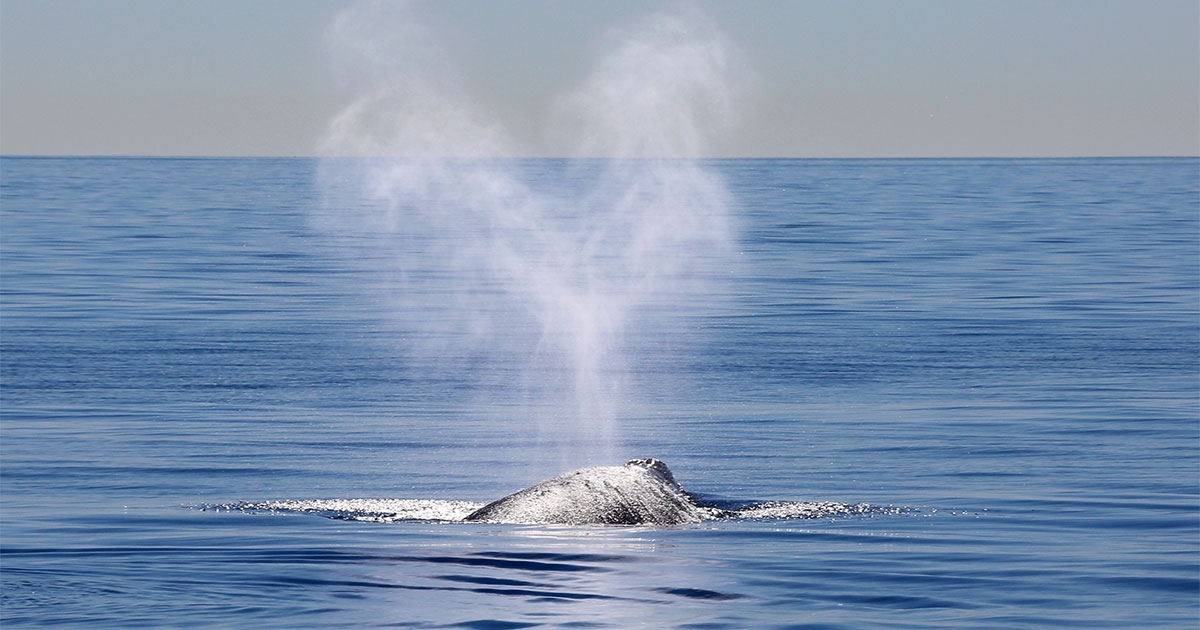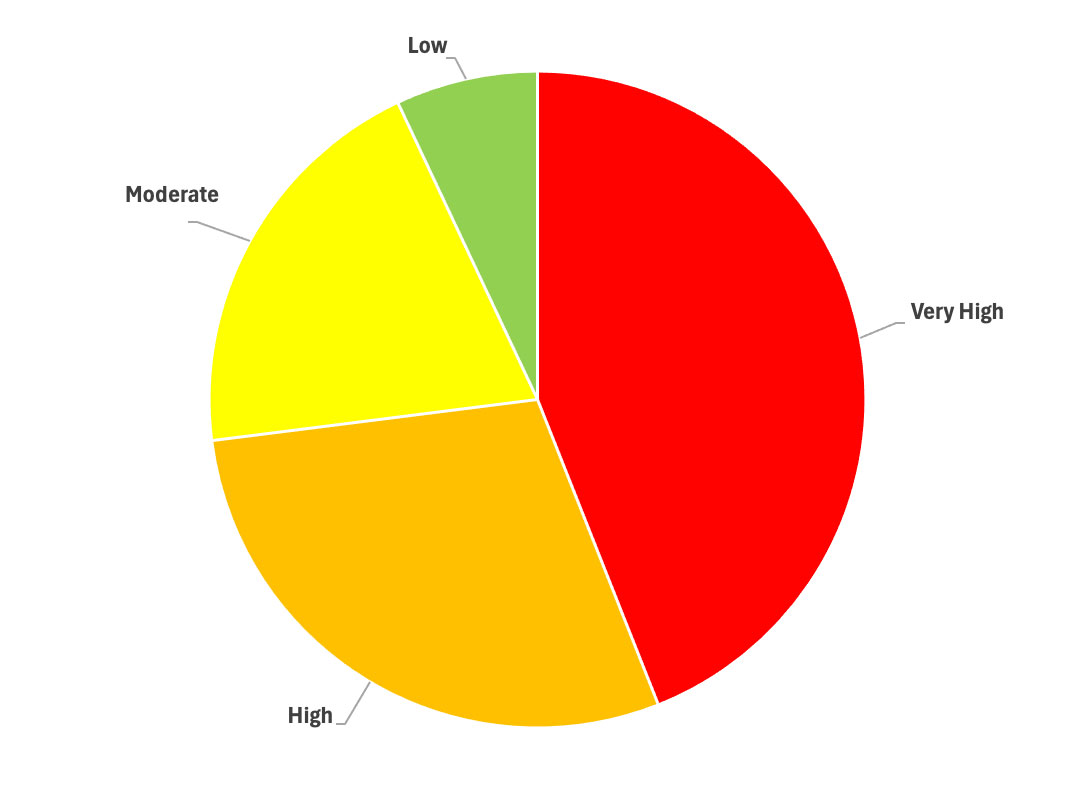
Climate Change Fuels Need for Marine Mammal Observation Services and Technologies
In September 2023, the National Aeronautics and Space Administration (NASA) announced that the Summer of 2023 was officially the hottest since records began in 1880, with ocean surface temperatures playing a critical role. The return of El Niño (a Pacific Ocean phenomenon whereby ocean circulation patterns push warm water eastward along the equator) continued to fuel exceptionally high surface temperatures throughout 2023, and is expected to bring drought to western Pacific regions and cooler, increased precipitation to the southwestern US states through the spring of 2024.
Alongside some of the marine environmental shifts associated with climate change, human-led ocean activities continue to expand—including a growing number of offshore energy, commercial fishing, and tourism projects—all of which carry the potential to impact marine mammal populations. Reports of marine mammal strandings associated with marine pollution and vessel strikes have continued to raise alarm amongst the general public and scientific communities alike. Understanding, assessing, and mitigating the risk faced by marine mammal populations to climate change and other anthropogenic stressors is a priority for many marine scientists.
Assessing Stock Vulnerability
As anthropogenic and climate change impacts continue to pressure marine mammal populations, scientists work to gather data to improve management, mitigation, and conservation activities. Tara Stevens, Project Scientist at CSA Ocean Sciences Inc. (CSA), was a subject matter expert (SME) and co-author on the recent updated climate vulnerability assessment published in PLOS ONE, titled, “Vulnerability to climate change of United States marine mammal stocks in the western North Atlantic, Gulf of Mexico, and Caribbean.”
This assessment—carried out by the National Oceanic and Atmospheric Administration (NOAA) and with a team of 41 SMEs—focused on the status of 108 marine mammal stocks managed under US jurisdiction in the western North Atlantic, Gulf of Mexico, and Caribbean Sea to understand and estimate vulnerability to the impacts of future climate change and climate variability. Data collected and used in the study included environmental conditions and sensitivity of marine mammal stocks. From the information available, scientists gave species a climate vulnerability score ranging from (1) Low, (2) Moderate, (3) High, and (4) Very High. Concerningly, the study found that most marine mammal stocks assessed are considered either very highly vulnerable or highly vulnerable to the impacts of climate change (Figure 1). Moreover, all species considered very highly or highly vulnerable are listed as endangered or threatened under the Endangered Species Act (ESA), including the North Atlantic right whale (Eubalaena glacialis) and Rice’s whale (Balaenoptera ricei). The online tool for Climate Vulnerability Assessment can be found here.

Figure 1. Summary of marine mammal stocks climate vulnerability scores, as assessed in Lettrich et al. (2023). Stocks were indexed as very highly vulnerable (44%), highly vulnerable (29%), moderate (20%), and low (7%).
Providing Solutions
As we continue to better understand the influences of climate change, the way in which we approach the underlying issues that threaten marine mammal populations will also adapt and change. Technical innovations are becoming increasingly important in marine mammal research, management, and conservation. The successful integration of innovation hinges on two additional and equally critical resources: (1) inclusion of skilled and experienced field teams needed to action them; and (2) use of the insights and recommendations of SMEs capable of designing quantitative and action results-orientated environmental mitigative plans.
CSA’s approach to offering clients innovative solutions to this and other environmental issues is built around these three pillars: (1) Application of cutting-edge technology; (2) Providing industry-leading field operations; and (3) Utilization of demonstrated subject matter expertise. For example, in 2021, CSA produced and delivered a GIS-based ship strike risk model for marine mammals and sea turtles to BOEM to address vessel transit scenarios arising from the development of offshore wind along the U.S. Atlantic coast. This model allows a user to analyze when and where high vessel strike risk might occur allowing them to make operational and mitigative decisions to reduce risk. Updates to expand the model to all US outer continental slope waters, including the Pacific and Gulf of Mexico, was initiated in 2023 and is ongoing.
Additionally, in 2023, CSA—in partnership with Woods Hole Oceanographic Institution (WHOI) and SeaRobotics Corporation (SeaRobotics)—announced a memorandum of understanding (MoU) for the commercialization of a marine mammal detection and classification system. This next-generation marine mammal detection system uses thermal infrared cameras to monitor for marine mammals in the strike zone ahead of a transiting vessel and alert the operator to their presence to reduce and avoid vessel strikes. This multi-phase commercialization of off-the-shelf products for ocean industry stakeholders, in addition to the rapid advancement of autonomous ocean platforms such as autonomous surface vehicles, will improve applied marine science mitigation efforts and conservation of marine mammal stocks.
Meanwhile, to help better prepare offshore teams to effectively manage risk to marine mammals and protected species during offshore operations, CSA’s team of SMEs offer trained lookout protected species observer (PSO) and marine mammal observer (MMO) training that guide operators at sea by identifying and recording observations of marine mammals, seabirds, and turtles to avoid and minimize potential interactions with protected species. CSA’s standardized training provides personnel with the monitoring tools and scientific background necessary to perform these mitigation activities efficiently and effectively.
To learn more about CSA’s innovative science and protected species and marine mammal observation services, visit: https://www.csaocean.com/services/marine-sciences/ocean-sound-marine-life
Corporate Headquarters
8502 SW Kansas Ave.
Stuart, FL 34997

